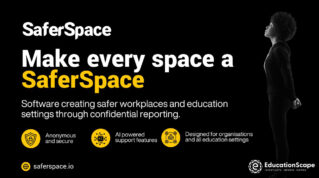Echoing school leaders’ concerns raised in these pages last week, Twinkl’s new survey of over 6,500 teachers finds rapid adoption of generative AI is offset by a lack of guidance, uneven adoption and some well-founded worries about the technology’s risks.
According to National Literacy Trust surveys, less than one-third of teachers had used generative AI in 2023. By 2024, this had risen to nearly half. Our own survey, conducted this January, found that 60 per cent are now making use of AI for work purposes, with over one-fifth using it daily.
This is hardly surprising amid well-documented challenges including high workloads, intense admin demands and poor work-life balance. Indeed, our survey shows that AI growth is very much a bottom-up revolution to meet these challenges.
However, it also highlights the shortcomings of this situation.
Teacher optimism
According to our data, two-thirds of teachers think AI will have a positive impact on educational standards. This is a much more upbeat view than the general UK population. A government survey published in December found around four in ten adults expect a positive impact to society from AI, while three in ten anticipate a negative one.
And it’s clear why. Generative AI is particularly adept at supporting teachers with the types of work they need the most help with, from creating lessons to performing admin tasks and writing reports. Indeed, fewer teachers are leveraging AI in their private lives (43 per cent) than in school (60 per cent).
In school, however, 83 per cent of teachers see AI as a time-saver. Given Teacher Tapp’s report in October that time spent on administrative tasks is the second highest cause of teacher stress (topped only by student behaviour), the potential benefits of AI are attractive.
For those who are adopting it, AI is already saving significant time. We find that 64 per cent of frequent (weekly or daily) users are saving between one and five hours a week. Nine per cent snip more than five hours, and a not insignificant three per cent claim to be taking back over ten hours.
This is a considerable amount of time that can be reinvested elsewhere, whether at work or at home.
Lack of support
As exciting as AI’s potential is, however, teachers adopting it are doing so largely off their own backs. A vast majority (76 per cent) are yet to receive any training or substantial guidance from their school.
AI is still a new and rapidly-changing technology, so it’s no surprise that many teachers feel under-informed. The sector needs to get going fast on providing accurate information regarding which AI tools to use, as well as training on how best to implement the technology and on what tasks.
The government has made a good start, issuing guidance around using AI safely and responsibly in education, as well as setting safety expectations for educational products. Elsewhere, its recently announced AI Opportunities Action Plan specifically champions AI’s use in education – stating that it will ‘allow teachers to personalise lessons to children’s needs’ and ‘reduce paperwork for teachers’.
In our survey, a sizeable 58 per cent of teachers agreed with these remarks. However, that leaves clear room for improvement. The survey also revealed a whopping 81 per cent do not believe that AI is sufficiently regulated.
What next?
The Department for Education (DfE) needs to offer a clear voice on AI, from making training as accessible as possible to shaping wider government regulation. All this will boost confidence, not just among teachers but among parents and pupils too.
No technology can replace good governance, sound leadership, or great teachers. However, the early evidence suggests AI is already helping the sector overcome some long-running challenges.
The benefits of AI can be realised faster and by a greater number of teachers. It will require everyone in the sector – from headteachers to heads of state – to pull in the same direction.
Read the full results of Twinkl’s survey here













Your thoughts